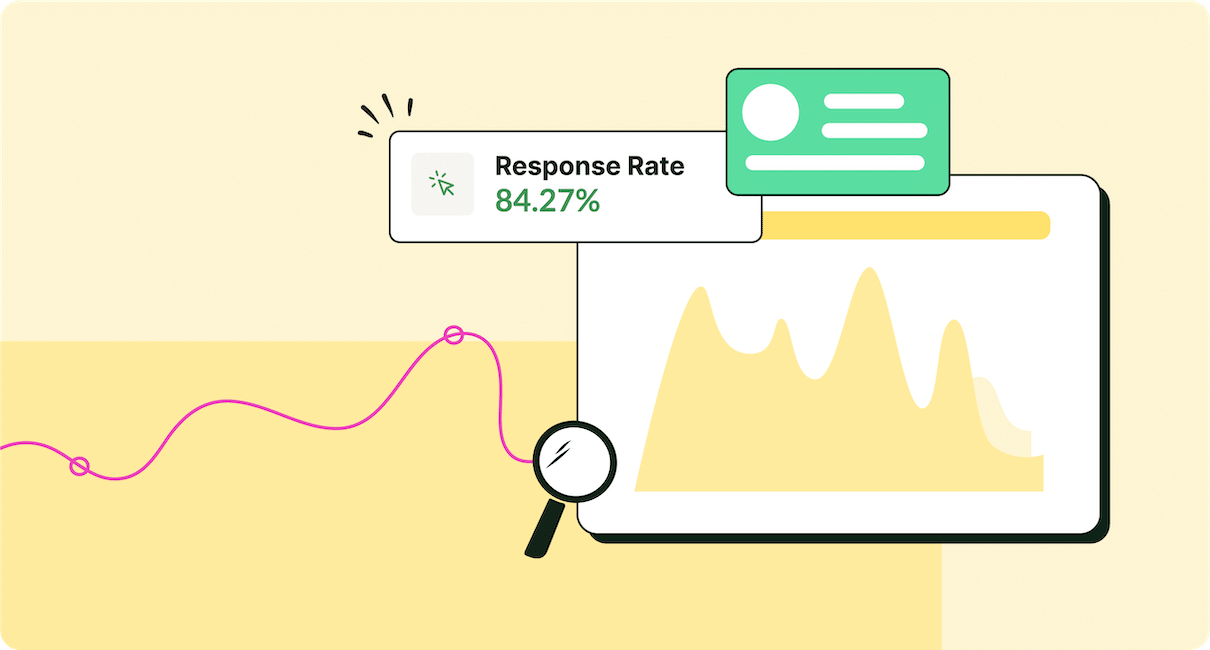Businesses across all industries have expressed interest in the hybrid workplace. This guide covers everything you need to know about implementing an effective hybrid workplace strategy.
As employers look for new ways to attract top talent, the hybrid workplace model has become part of a competitive job package. The flexible arrangement balances in-office and remote work, which is a boon for many employees.
Yet, companies are only working out the nuts and bolts of what a hybrid workplace should look like. Questions of risks, rewards, the impacts on employee engagement, and the logistics of hybrid work remain relatively unexplored.
With this guide, we’ll shed some light on what a hybrid workplace could look like in action. We’ll also explore hybrid workplace best practices and the tools that can help you manage a hybrid workforce.
Take a self-guided tour of ContactMonkey
See how our key features can streamline your internal communications.
Take product tour

What is a Hybrid Workplace?
Hybrid work has quickly become a buzzword in today’s corporate vocabulary. But what does it mean in practice?
Look at it this way: a hybrid workplace is a flexible work arrangement where employees can work from home or the office. While hybrid work always consists of some combination of remote work and office work, it can play out in many ways.
For instance, some employers may allow their staff maximum flexibility—employees can choose where and when they want to work. In this arrangement, employees can decide to work from home or even abroad 100% of the time.
On the other hand, some employers may instate a more structured hybrid workplace model. This can include asking employees to work in the office for a set number of days a week.
Ultimately, a hybrid workplace offers more choices for employees through added flexibility.
Start two-way conversations and employee feedback loops
Learn how to engage staff with pulse surveys, content ratings and reactions, custom polls, and more. Ready to send modern emails?
See engagement features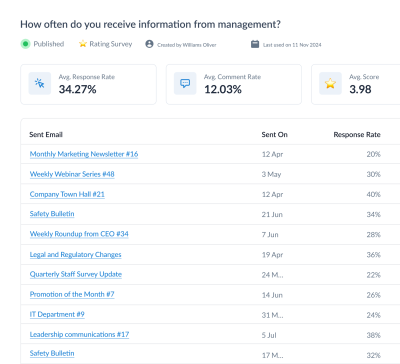
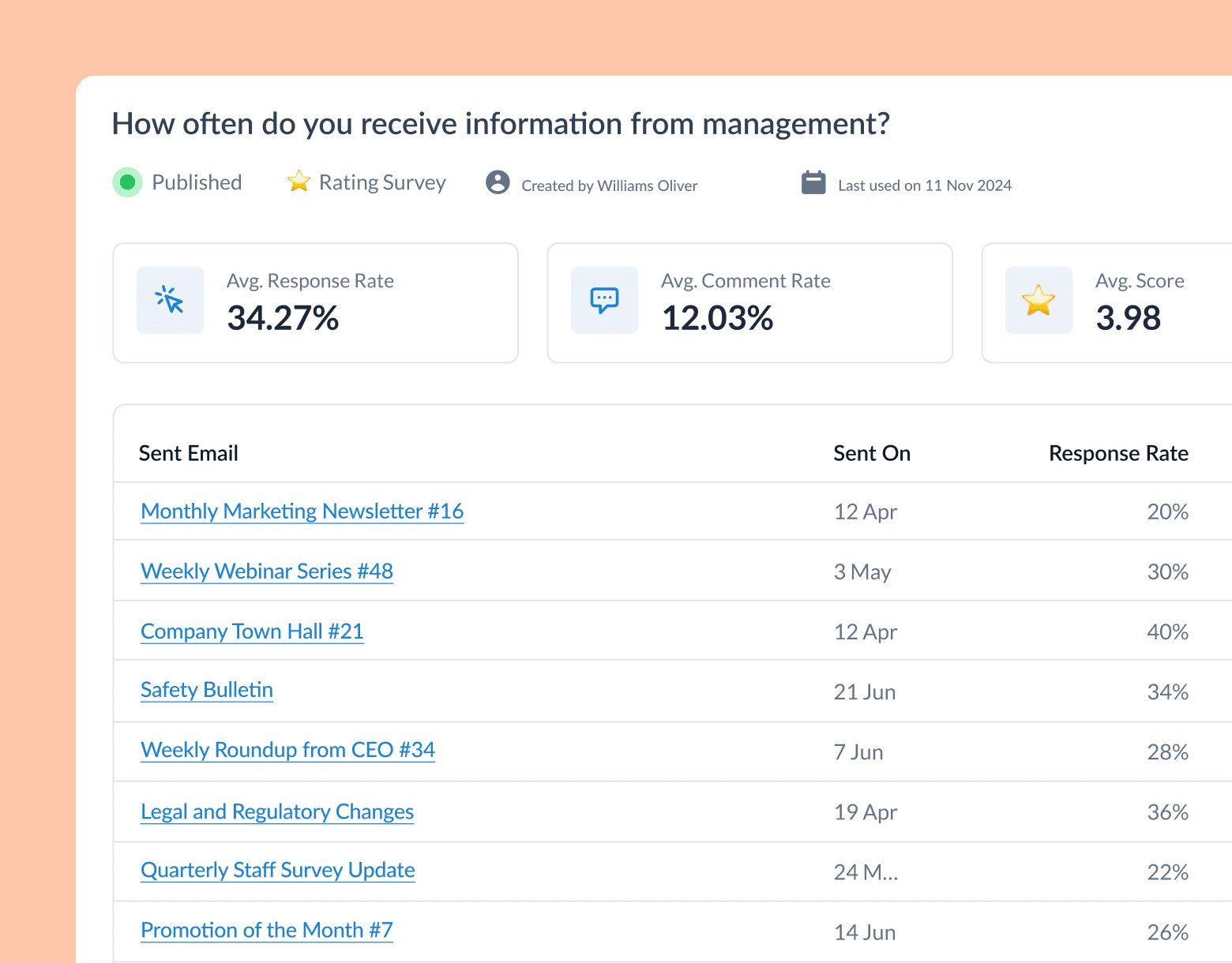
Types of Hybrid Workplace Models
Today, more than 50% of companies intend to implement some form of hybrid workplace. Yet, not everyone will be following the same blueprint.
Some companies opt for a hybrid workplace, prioritizing remote work with minimal or no office time. Others want to strike a perfect balance between office work and at-home work. Meanwhile, some organizations aim to minimize remote work while offering flexibility as employees get used to new routines post-pandemic.
Here are just a few of the popular hybrid workplace models employers can choose from:
1. Remote-first
A remote-first hybrid workplace allows some employees to work fully remotely. This workplace model is similar to a fully remote office, with the exception that some staff have to come to the office occasionally. Employees in this group often include senior leaders and management staff.
Companies like Quora, Substack, and others have already adopted this model. It allows these companies to save real estate space while offering their employees ultimate flexibility. A possible drawback is that employees who dislike working from home no longer have many alternatives.
2. Office-occasional
Many employees look forward to their return to the office. Some miss the structure and social environment of the physical workplace, while others may have faced an at-home work environment with plenty of distractions and are excited to regain their focus.
If a complete return to the office is not yet possible, but your teams see the benefits of this work environment, the office-occasional model is your solution. This type of hybrid workplace allows employees to come in a few days a week.
Whether for health and safety reasons or employee preferences, this workplace model balances office and remote work and caters to a range of working styles. You can smooth out this workplace model by using effective return-to-work emails.
3. Office-first, remote allowed
At companies with an office-first, remote allowed policy, employees have the option to work from home on occasion. However, the office remains the primary workspace.
A risk with this hybrid workplace model is that workers who choose to work remotely more often could be regarded negatively by colleagues or management.
When most people are in the office, it’s more likely that those who aren’t will be seen as the odd men out and feel excluded. This, in turn, creates divisions in the office or deters employees from doing at-home work entirely.
The Pros and Cons of a Hybrid Workplace
Choosing who can work from home and who comes into the office can be a logistical headache. Without a well-thought-out hybrid workplace strategy, you may create confusion for your employees and frustration for management. It could also risk your company culture, teamwork, and creative output.
On the other hand, a well-planned hybrid workplace can have many benefits. From attracting a bigger talent pool to increasing employee retention, hybrid work can bring people together if done right.
Let’s break down some of the benefits and drawbacks of a hybrid workforce.
Benefits of a Hybrid Workplace
Greater employee satisfaction: A recent study showed that 52% of the American workforce favored a hybrid workplace. This indicates that a hybrid workplace and employee satisfaction are directly related as hybrid work is popular among all employees.
Bigger talent pool: A hybrid workplace’s flexibility could accommodate the schedules of a wider range of job seekers—parents, part-time students, and others. Meanwhile, having greater choice over one’s lifestyle makes hybrid work attractive to millennials who look for moreflexible and remote workoptions. This, in turn, amplifies the candidate pool for companies with a hybrid workplace.
Competitive employer brand: A hybrid workplace enables employers to offer an attractive job package to candidates. This advantage helps build a compelling employer brand as more job seekers flock to such companies.
Higher productivity: According to one study, 95% of corporate employees are more productive than before the pandemic. Less commuting and minimal workplace distractions are possible reasons. While some attribute this success to having fully remote employees, others suggest that it’s about striking a balance between remote and in-office work. This way, all employees’ working styles can be accommodated.
Better work-life balance: Work-life balance is the biggest reason job seekers seek flexible work. Whether having time to pick up kids from school or finishing work in time to get to the gym, hybrid work caters more to employees’ personal lives.
Disadvantages of a Hybrid Workplace
Potential for reduced employee engagement: If employees are removed from the office, they could be at greater risk of feeling disengaged and disconnected from colleagues. As some employees work remotely while others come into the office, certain workers may feel left out.
Less employee collaboration: Studies conducted during the pandemic showed that full-time employees who worked from home experienced a 37% drop in collaboration time. When you introduce the added element of having some employees in-office and others away, the impacts on collaboration can increase.
Increased surveillance: According to a study by Gartner, around 75% of office conversations will likely be recorded and assessed by 2025. This type of surveillance is especially a risk in remote and hybrid work environments where managers feel less in control and in-touch with employees.
Lack of control over the work environment: For a part of your workforce to effectively work from home, access to reliable technology is key. Employees working remotely need a quality computer, fast-speed internet, quality headphones, and a range of software to collaborate effectively.
The best way to understand the possible risks involved with a hybrid workplace is to ask employees directly. With ContactMonkey’s anonymous comments, employees can express their honest concerns and provide suggestions for your hybrid workplace strategy. Employees can add their feedback seamlessly, right from your company newsletter.
5 Tips for Implementing a Hybrid Workplace
Implementing a hybrid work strategy doesn’t happen overnight, and there will likely be a learning curve. But with some planning and investing in practical tools, you can simplify the process while improving your employee experience with added flexibility.
We’ve listed our top hybrid workplace best practices and tips for managing a hybrid workforce.
1. Establish a clear hybrid workplace policy and guidelines
Before announcing your plans for a hybrid workplace to employees, pause. Ensure you clearly understand what hybrid work will entail for your business.
Are employees still expected to visit the office at least once a week? Will there be a schedule to ensure that not everyone comes in at once, hampering social distancing? If remote work is an option, will it include working from another state or province or even abroad?
Prepare a set of answers to these questions and compile them into a document of your hybrid workplace policies and guidelines. Then, distribute this across your teams using your company newsletter.
With internal communications software like ContactMonkey, you can embed your guidelines document using smart links rather than bulky attachments. Simply click on the smart links icon when creating your email newsletter within the email template builder. This feature and others are available through an easy-to-use sidebar menu.
Once your email is sent, you can track how many people opened your email and clicked on your document using ContactMonkey’s in-depth workforce analytics. This is an excellent way of measuring employee engagement, as you’ll learn which employees know what to expect from your hybrid workplace and, perhaps more importantly, which don’t.
With ContactMonkey’s emoji reactions, employees can also show how they feel about the new guidelines and policies. Drag and drop a survey question, ‘How do you feel about our new hybrid workplace policy?’ using your ContactMonkey email template builder. Then, choose emoji reactions as the response option to gauge your employees’ take on hybrid work.
Avoid email send limits in Outlook and Gmail
Bulk send internal emails to 10k+ recipients and track the performance in using ContactMonkey.
Send bulk email
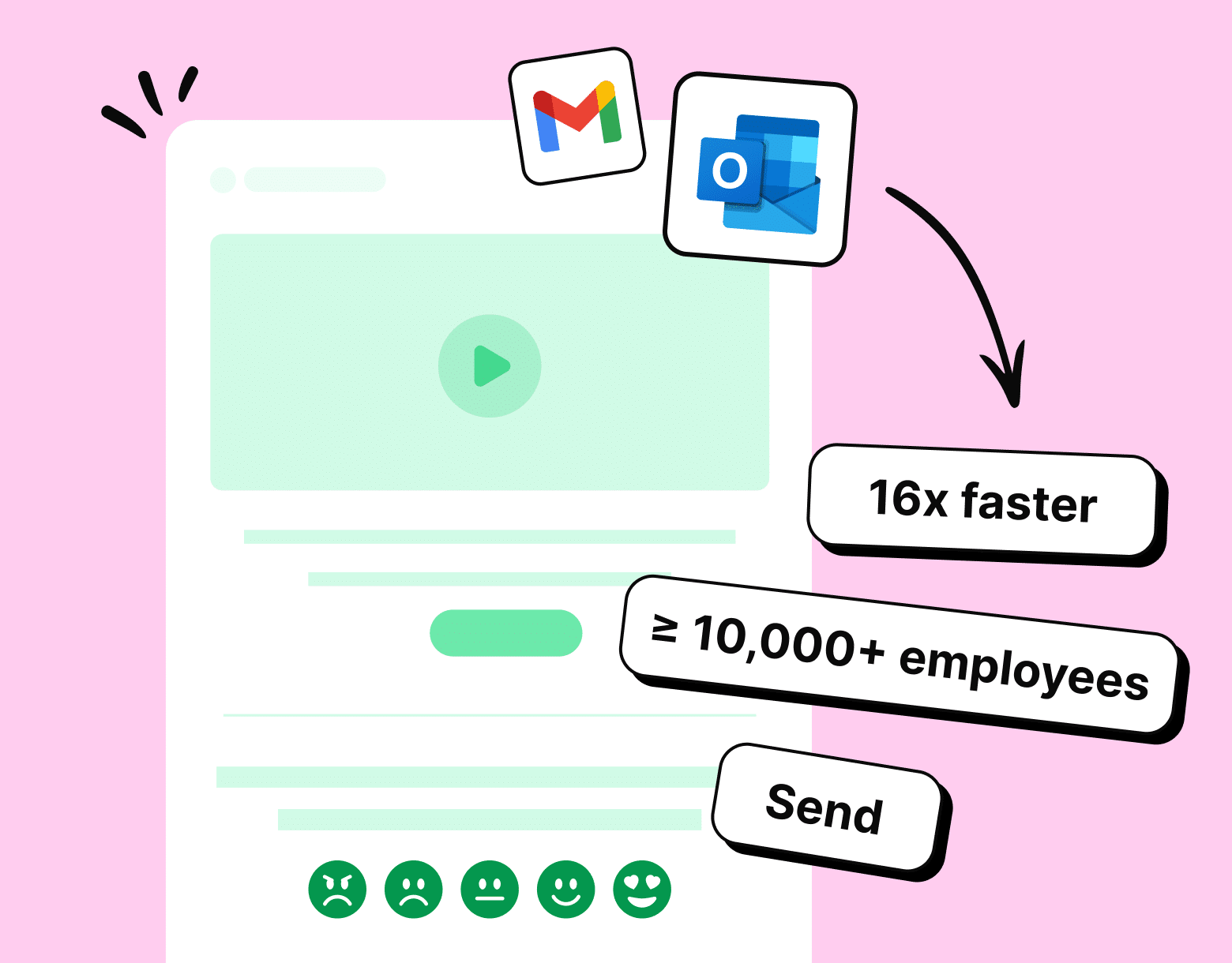
2. Focus on communication
Before, you could rely on word of mouth for whatever slipped through the cracks of your internal communications.
But this becomes harder in a hybrid workplace. You need to ensure that employees stay connected and receive critical messages despite being away from the office’s physical space.
On the other hand, those coming back to the office after so long must receive excellent and timely return-to-work communications.
Whether remote workers, in-office, or both, all employees rely on your company emails for key updates. With ContactMonkey’s email template builder, you can design stunning HTML emails and get in-depth analytics to gauge employee engagement.
ContactMonkey helps you boost email engagement with interactive elements like embedded pulse surveys and GIFs. It also lets you create more informative communications while keeping things visually dynamic with videos and smart links.
To check if your communications reach the remote teams in your hybrid workforce, visit your analytics dashboard. You’ll have all the key stats—open rates, click-through rates, read times, and more—all in one place. ContactMonkey’s segmented email stats will even let you pinpoint disengaged departments and company locations so you can adapt your engagement strategy accordingly.
3. Provide employees with the necessary resources for collaboration
Concerns about employee collaboration and engagement are at the forefront of disputes on the risks of hybrid work. But with the right tools and technology, these worries can be diminished.
Remember, collaboration is not just about group work. Having time for independent thinking and developing ideas to share with others is equally important.
In this way, independent work could support collaboration space if there are practical tools to connect the two.
Collaborative video software like Remo is an innovative solution. It goes beyond Zoom’s capabilities, allowing employees to draw and write on a group whiteboard or share documents and media.
Meanwhile, interactive employee communications software like ContactMonkey enables employees to collaborate using surveys, polls, smart links, and videos. You can also use them to launch virtual team building activities during, and outside of, work.
Using ContactMonkey’s pulse surveys, staff can ask questions, vote on new ideas, give feedback, and comment on industry news.
ContactMonkey’s email template builder lets you embed response features like emoji reactions, star ratings, and thumbs up/down. So employees can easily give feedback right from their emails. Not to mention, your internal communications team can get a clear view of responses and engagement stats using their ContactMonkey dashboard.
With the right technology, you can stay up to speed with the changing role of internal communication and keep employees connected wherever they may be.
4. Gather continuous feedback
During rapid change, the most important thing is to check in on employees. Gathering continuous employee feedback lets you gauge staff concerns before they become deal breakers for your team.
Are employees feeling distracted by the new hybrid work model? Do they feel that their productivity has decreased? Or are they experiencing greater work-life balance and well-being in the new work environment? These are all important questions to ask during the transition to hybrid work.
Employers can no longer gauge employee engagement and satisfaction levels from in-person interactions, so honest feedback becomes vital.
With ContactMonkey, you can make the feedback process seamless by embedding employee pulse surveys directly into your company newsletters.
Using ContactMonkey’s eNPS feature, you can check employee engagement levels using a single, pointed question to determine your employee net promoter score (eNPS).
Get powerful email analytics and reporting features
Know exactly who is opening and engaging with your employee communications and company newsletters.
Explore analytics & reporting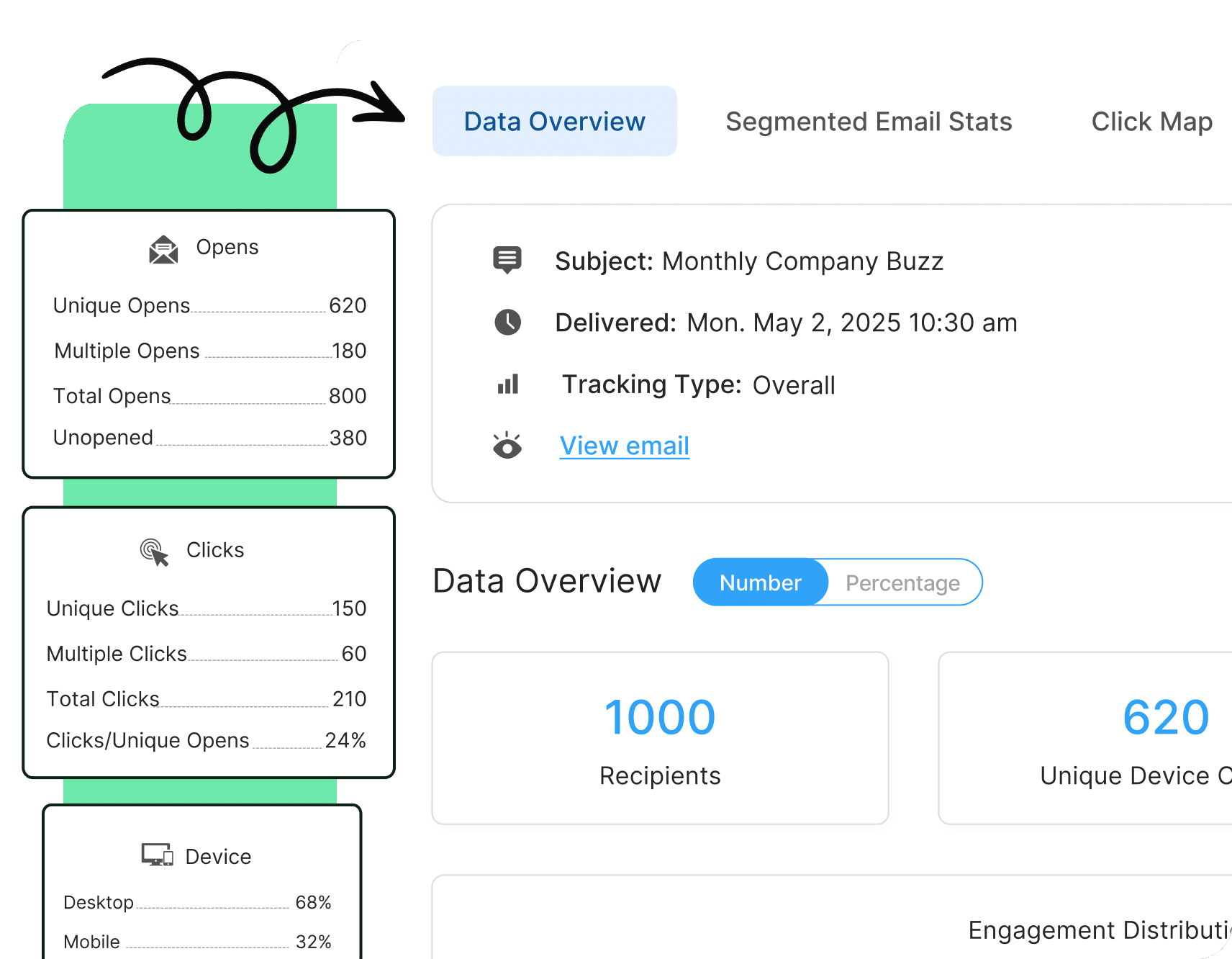
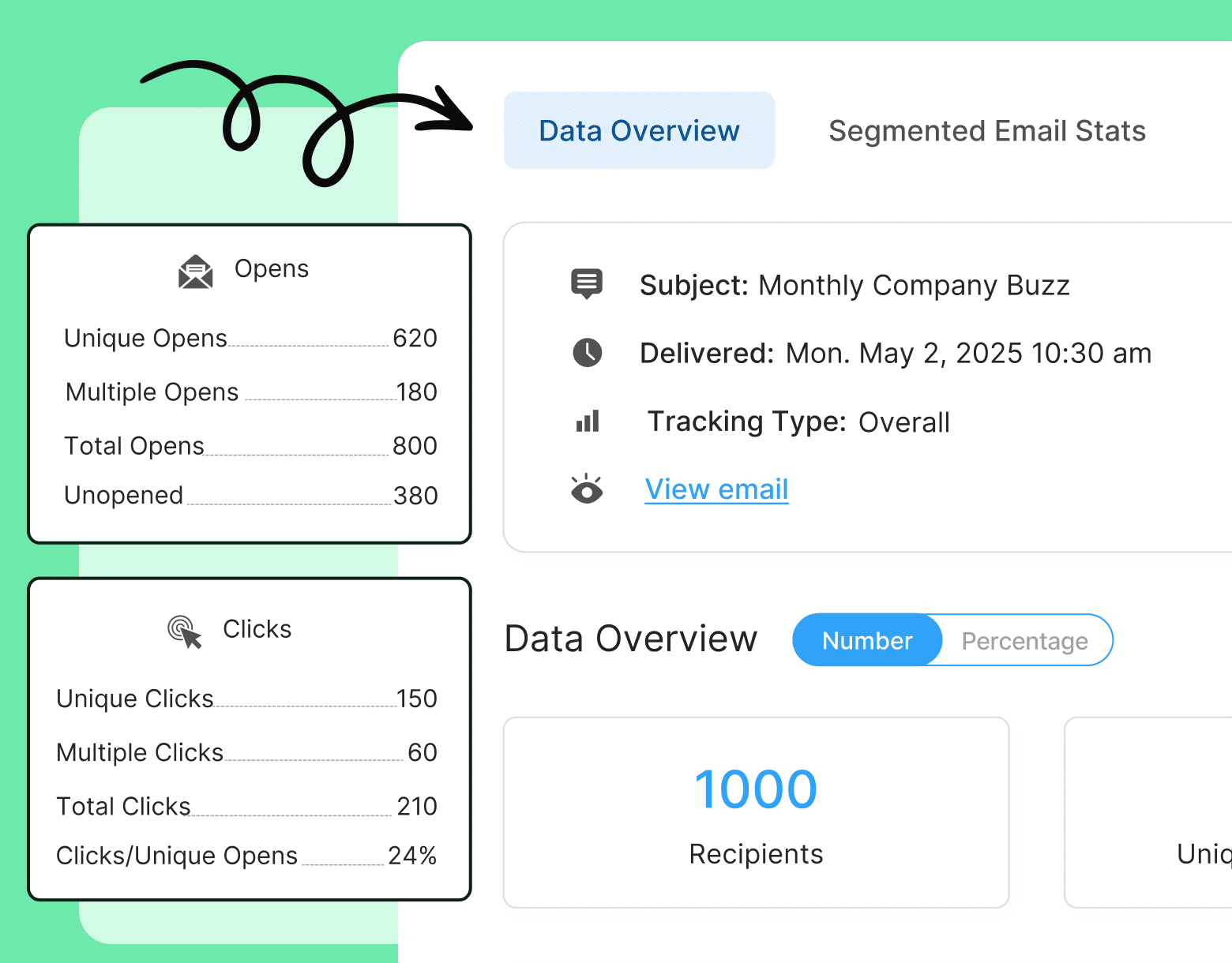
5. Brace for the learning curve
A hybrid workplace model is a popular feature across many companies—maybe even the future of work. But it’s still a big leap from the past. Senior leaders and staff alike will need time to adapt.
If you’re implementing an office-first hybrid model but notice some employees going entirely off the grid, don’t panic. Instead, take inventory of how you’re communicating your hybrid workplace policies. Speak with employees during your weekly meetings and provide effective employee feedback.
On the other hand, if you notice that employees who come into the office are less excited or motivated about their work, ask them what can be improved.
With ContactMonkey, you can gather quick, continuous feedback using your employee pulse surveys. Employees can also use the same feedback channel to provide suggestions and allow you to improve your hybrid office.
Turn on anonymous commenting in your ContactMonkey template builder before embedding your message into Outlook or Gmail. Employees can elaborate on their survey responses while confident that anonymity is guaranteed.
How to Develop a Hybrid Workplace Strategy
Once you’ve decided how you want to introduce your hybrid workplace approach to your employees, the next step is to solidify your plans by developing a hybrid workplace strategy. This strategy will outline specific actions you’ll take to ensure that your employees can succeed while adapting to this new working configuration.
There are many ways to design your hybrid workplace strategy. One surefire way to address your employees’ concerns is to conduct a hybrid workplace survey to get an idea of what issues are pressing for them. This kind of employee feedback will inform you how to structure your strategy and if any hybrid workplace technology is required to achieve your productivity goals.
After you’ve collected your employees’ thoughts and prioritized their concerns, start building your strategy. This can be similar to your internal communications strategy, which only aims to coordinate your in-office and remote employees. Build content like the aforementioned hybrid workplace surveys, along with whatever other communications you need to send, and begin to schedule your sends and develop KPIs.
A well-built hybrid workplace strategy should ensure that your employees are prepared to succeed from wherever they’re working and that they receive all the resources they need to do their jobs. It should also help you determine the efficiency of your hybrid workplace and highlight areas for improvement.
Challenges of a hybrid workplace
Some of the biggest challenges with hybrid work are collaboration and communication. Physical distance and differing time zones can hinder collaboration in a hybrid workplace, and communication in a hybrid workplace can be affected by similar factors.
This is where employee feedback excels: poll your employees to see what their biggest challenges with hybrid work are. Look for recurring issues and whether your employees have suggested any preferred solutions. Create a selection of options and ask your employees which solution they’d prefer. Though this may seem like a lot to ask your employees, it’s worth ironing out their concerns initially rather than letting their problems slow down their productivity over months or years.
Ultimately, the better you address your employees’ concerns, the more they’ll thrive in your hybrid workplace. If your existing employees are thrilled with how your company approaches hybrid work, then new employees are more likely to buy into that ideology. This cycle helps solidify your hybrid workplace culture as a point of pride rather than a tenuous experiment.
Start To Manage Your Hybrid Workforce Effectively
It doesn’t look like the future of the office will resemble the past, but that’s not necessarily a bad thing. Organizations that choose to opt for a hybrid workplace can gain many advantages. The key is having proper internal communications planning, clear guidelines, and being straightforward about your expectations. With the right tools, you can ensure that employees stay connected and engaged whether they’re 6 or 6,000 feet apart.
Embedded pulse surveys enable you to gather feedback and continuously improve your hybrid workplace model. Meanwhile, in-depth analytics can give you peace of mind by ensuring that key messages reach your employees—wherever they may be.




